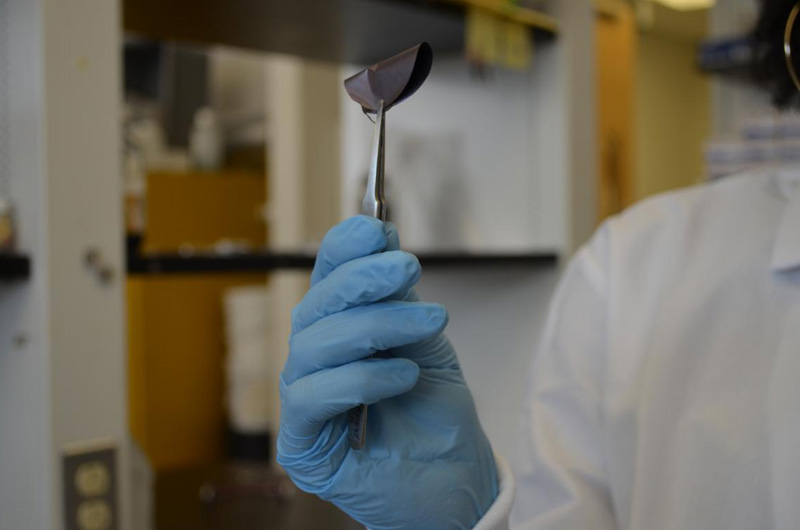
MXene is a nanomaterial that can super effectively block and absorb electromagnetic radiation.
Image: Drexel University
We’ve all experienced electromagnetic interference, whether it’s hearing your car engine break in your AM radio station or the squealing of speakers at a concert when a cellphone gets to close. However, researchers from Drexel University may have found a way to all but stop this interference though what they’re calling MXene (2D Transition Metal Carbides).
Electromagnetic interference isn’t just annoying for users, it’s damaging for devices and could lead to the overall degradation of cellphones, laptops, and other electronics.
Typically, to block this interference, scientists encase the interior of electronics with conductive metal (i.e. metal, copper, or aluminum). But researchers for this new study found that a few-atoms thin titanium carbide may be more effective at blocking such interference. Additionally, it is extremely easy to apply – with the ability to be sprayed on to any surface just like paint.
“With technology advancing so fast, we expect smart devices to have more capabilities and become smaller every day. This means packing more electronic parts in one device and more devices surrounding us,” says ECS Fellow Yury Gogotsi, lead author of the research. “To have all these electronic components working without interfering with each other, we need shields that are thin, light and easy to apply to devices of different shapes and sizes. We believe MXenes are going to be the next generation of shielding materials for portable, flexible and wearable electronics.”
Researchers tested samples of MXene films ranging in thickness from just a couple micrometers (one-thousandth of a millimeter) up to 45 micrometers, which is slightly thinner than a human hair. This is significant because a material’s shielding effectiveness, a measure of a material’s ability to block electromagnetic radiation from passing through it, tends to increase with its thickness, and for purposes of this research the team was trying to identify the thinnest iteration of a shielding material that could still effectively block the radiation.
Researchers found that the MXene is super effective when it comes to shielding – with the ability to achieve 99.9999 percent blockage of radiation.
“This finding is significant since several commercial requirements for an electromagnetic interference shield product are engrained in a single material,” Gogotsi, who awarded the 2015 RUSNANOPRIZE, says. “MXene displays many of these characteristics, including high shielding effectiveness, low density, small thickness, high flexibility and simple processing. So it is an excellent candidate for use in numerous applications.”

